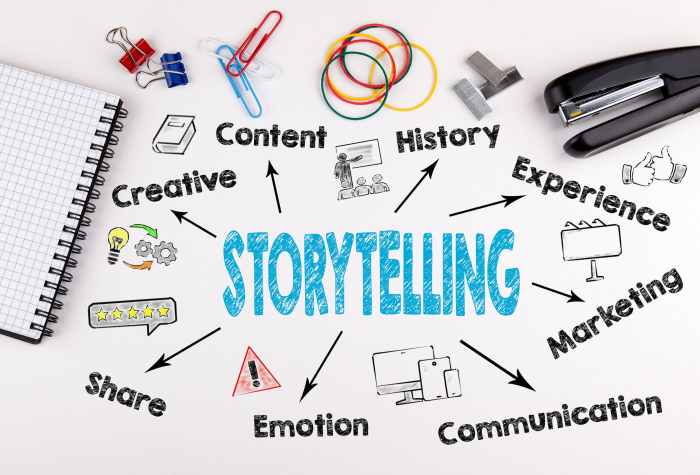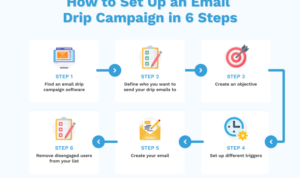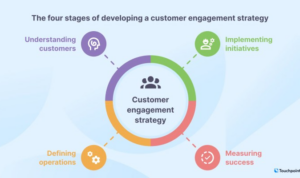Effective Storytelling in Marketing dives into the power of storytelling to captivate audiences and drive successful marketing campaigns. From connecting emotionally to crafting a brand’s narrative, this topic delves deep into the art of storytelling in the marketing realm.
Exploring the essential elements and strategies, this discussion sheds light on how authenticity and understanding audience preferences play a vital role in creating impactful marketing stories.
Importance of Effective Storytelling in Marketing

Effective storytelling in marketing plays a crucial role in capturing the attention of consumers and creating a lasting impact. By weaving a compelling narrative, brands can connect with their audience on a deeper emotional level, leading to increased engagement and brand loyalty.
Examples of Successful Marketing Campaigns
- The Coca-Cola “Share a Coke” campaign personalized their bottles with popular names, creating a sense of connection and inclusivity among consumers.
- Dove’s “Real Beauty” campaign challenged traditional beauty standards and empowered women to embrace their natural beauty, resonating with a wide audience.
- Apple’s iconic “1984” commercial during the Super Bowl not only introduced the Macintosh computer but also positioned Apple as a revolutionary brand challenging the status quo.
Connecting with the Audience Emotionally
Storytelling helps brands connect with their audience on an emotional level by tapping into universal human experiences, values, and aspirations. By sharing stories that evoke empathy, inspiration, or nostalgia, brands can build a strong emotional bond with consumers, leading to increased trust and brand affinity.
Elements of Effective Storytelling in Marketing
Effective storytelling in marketing involves several key elements that help capture the audience’s attention and drive engagement. By incorporating characters, plot, conflict, brand values, mission, and authenticity, marketers can create compelling narratives that resonate with consumers.
Characters, Plot, and Conflict
- Characters: Developing relatable and engaging characters in marketing storytelling helps humanize the brand and establish emotional connections with the audience.
- Plot: Crafting a compelling storyline that keeps the audience interested and invested in the brand’s message is crucial for effective storytelling in marketing.
- Conflict: Introducing conflict or challenges in the narrative can create tension and intrigue, driving the audience to follow along to see how the story unfolds.
Incorporating Brand Values and Mission
- Brand Values: Integrating a brand’s core values into storytelling can help reinforce the brand identity and communicate what it stands for to consumers.
- Mission: Aligning the brand’s mission and purpose with the narrative can create a sense of purpose and authenticity that resonates with the audience.
Authenticity in Storytelling
- Being Authentic: Authentic storytelling involves conveying genuine emotions, experiences, and values that reflect the brand’s true identity, fostering trust and credibility with consumers.
- Impact on Consumer Engagement: Authentic storytelling can drive deeper connections with the audience, leading to increased brand loyalty, advocacy, and long-term relationships.
Strategies for Implementing Effective Storytelling in Marketing

Developing a compelling brand story that resonates with the target audience is crucial for successful marketing. Here are some steps to help you create a story that captures the attention of your customers:
Creating a Compelling Brand Story
- Start with a clear purpose: Identify why your brand exists and what values it stands for. This will form the foundation of your story.
- Understand your audience: Conduct research to know who your target customers are, what they care about, and how your brand can connect with them.
- Create relatable characters: Develop personas that represent your target audience to make your story more engaging and personal.
- Show, don’t just tell: Use visuals, emotions, and experiences to bring your brand story to life and make it memorable.
- Add conflict and resolution: Every good story has ups and downs. Highlight challenges your brand overcame to resonate with your audience.
Creating a Consistent Narrative Across Marketing Channels
To maintain a consistent brand story across different marketing channels, follow these tips:
- Define your brand voice: Establish a tone and style that reflects your brand’s personality and use it consistently in all communications.
- Integrate storytelling in all channels: Whether it’s social media, email marketing, or ads, ensure your brand story is present in every touchpoint with your audience.
- Coordinate messaging: Align your storytelling across all platforms to avoid mixed messages and maintain a cohesive brand image.
- Monitor feedback: Listen to how your audience responds to your story and adjust as needed to keep it relevant and engaging.
Tailoring Storytelling to Audience Preferences, Effective Storytelling in Marketing
Understanding your target audience’s preferences is key to effective storytelling. Consider these factors:
- Demographics: Know the age, gender, location, and interests of your audience to tailor your story to their specific needs.
- Psychographics: Understand the values, beliefs, and motivations of your audience to create a story that resonates with their emotions.
- Feedback and data: Analyze customer feedback and data to see what type of stories perform best and adjust your storytelling strategy accordingly.
- Personalization: Use personalized storytelling techniques to make your audience feel seen and understood, increasing engagement and loyalty.
Measuring the Impact of Storytelling in Marketing
Storytelling in marketing is not just about telling a good story; it’s also crucial to measure its impact to ensure it’s effective. By evaluating key performance indicators (KPIs) and analyzing audience engagement through analytics, marketers can track the success of their storytelling initiatives. Let’s dive into how to measure the impact of storytelling in marketing.
Key Performance Indicators (KPIs)
- Conversion Rate: Measure the percentage of leads that turn into customers after engaging with storytelling content.
- Engagement Metrics: Track metrics like time spent on page, bounce rate, and social shares to gauge how well your audience is interacting with your stories.
- Brand Awareness: Monitor changes in brand awareness by conducting surveys or analyzing social media mentions before and after storytelling campaigns.
Role of Analytics in Measuring Audience Engagement
Analytics play a crucial role in measuring audience engagement with storytelling content. By leveraging tools like Google Analytics, marketers can track user behavior, demographics, and preferences to understand how their audience is responding to the stories being told.
Tools and Techniques for Tracking Success
- Google Analytics: Utilize this powerful tool to track website traffic, user engagement, and conversion rates related to storytelling campaigns.
- Social Media Insights: Platforms like Facebook and Instagram offer insights into post performance, audience demographics, and engagement metrics for storytelling content.
- Surveys and Feedback: Collect feedback from customers through surveys or feedback forms to understand how storytelling content has impacted their perception of your brand.





